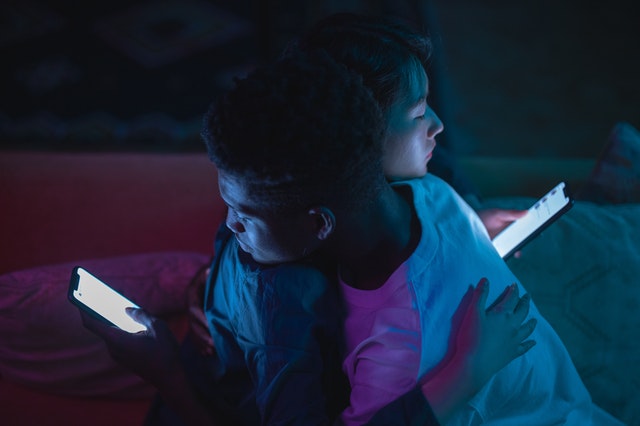
The developers of the dating app Tinder recently announced that new safety features would be added to its app throughout 2020. These updates include a means to connect users with emergency services when they feel unsafe and more safety information provided through the app.
Given that many users, especially women, experience harassment, sexism and threatening behaviour on Tinder, these appear to be positive steps to addressing such issues.
Tinder also mentioned app updates will incorporate artificial intelligence (AI) to validate profile photos. Their blog explains:
“The [AI] feature allows members to self-authenticate through a series of real-time posed selfies, which are compared to existing profile photos using human-assisted AI technology.”
Whereas Tinder’s connection to Facebook previously served to validate user identity, the app now lets users join without linking Facebook. Features like this AI-powered photo validation are intended to enhance users’ trust in each other’s authenticity.
Authenticating users
We already know that people tend to fib a bit on their dating profiles to counter idealized perceptions of the desirable age, height and weight of a potential partner. Users of the app also selectively disclose details and elements of their appearance to avoid racism, sexism and homophobia.
People have long appropriated technologies to make them fit with their lives. This process is called domestication. It is achieved when we no longer notice technology because it works so well for us. For example, after setting up a smart speaker to play your favourite tunes after work, you may no longer notice the speaker at all when you arrive home and start humming along.
My recently published study uncovered a variety of surprising ways that people used Tinder in their lives. However, platforms and apps like Tinder are social technologies, and users take notice when members use them for something unexpected. Platform companies may also take note. Their updates to features or functions can make some of these innovative uses more difficult or even impossible.
Beyond dating, my study revealed a fine balance between how apps guide users’ behaviour and how people make this technology effective for a range of goals.
Apps have labels
When a doctor prescribes medication, it comes labelled with directions for use. Similarly, many apps have a stated purpose. In Apple’s app store, Tinder is described as an app for “meeting new people.” We can think of Tinder’s self-description as the app’s label.
Since Tinder’s launch, in its popular coverage and everyday use, people have tended to think about it as an app for arranging dates and sexual encounters or hook-ups. We can think of this as Tinder’s expected use.
Sometimes people use medication for something other than what’s on the label. Pharmacologists call this “off-label use.” It’s a catchy term that journalist Jeff Bercovici first imported into the tech world when reporting about lesser-known uses of platforms.
While Facebook and Twitter host a broad range of user activities, my study asked, what does off-label use look like on an app like Tinder, which has an articulated label? Further, how does off-label use play out when other users expect that the app has fixed purposes?
Swiping for awareness, politics and money
I examined a range of news articles reporting on how people were using Tinder for purposes other than dating and hooking-up. Since my research started in 2016, it didn’t take long to uncover several articles about people campaigning on behalf of politicians in the lead-up to the United States presidential election.
I also found several health and awareness campaigns, personal ads, promotion of local gigs, joke accounts and even subversive works of art.
In select interviews with people carrying out these off-label uses, I found that they often complemented Tinder’s expected use for dating and hooking up. For example, an anti-smoking campaign focused on the message that smoking is unattractive. It involved two different profiles for the same model, who was smoking in the photos on one profile and not on the other. The campaign boasted that the non-smoking profile received many more right swipes (likes) than the smoking profile.
People also found creative ways of using Tinder’s features. The lead of an anti-sex trafficking campaign constructed profiles warning users to watch for signs of non-consensual sex work. This campaign re-purposed profile photos in a storytelling manner, getting across the message in a way that Tinder’s new photo validation software may be unlikely to allow.
Not all matches were happy to encounter off-label users. Several users told a Bernie Sanders campaigner that she was using the app the wrong way and threatened to report her. Both the political campaigner and a woman selling nutritional supplements spoke of frequently receiving hostile messages from men who were frustrated that these women weren’t looking for a romantic or sexual connection.
A delicate balance between users and apps
While Tinder seemed to take little notice of individual off-label users, the app has been updated over time to deal with high volumes of disruptive activity. In response to spam bots — deceptive automated accounts running phishing scams — Tinder introduced a reporting mechanism. The company also associated the introduction of a swipe limit, a constraint on the number of accounts that a user could swipe right on (like) over a given period, with a reduction in spam bots.
These changes also affect the development of off-label uses. A swipe limit that can only be surpassed through a premium subscription poses financial barriers for non-profit organizations, such as those running health and awareness campaigns.
Similarly, people looking to sell items or promote their music, creative endeavours or favourite politician may be subject to higher rates of reporting now that Tinder has articulated restrictions on commercial activity, allowing only officially approved advertising.
Platform changes like this may be reassuring for those only wanting to use the app for meeting romantic and sexual partners. However, the range of uses I uncovered demonstrate that Tinder is a social ecosystem where multiple activities co-exist.
This reflects findings by historian Andrew DJ Shield that some Grindr users establish friend networks, and housing or employment opportunities while also using the app to identify potential partners. It seems that the division between these aims is not so clear cut on what are generally thought of as dating and hook up apps.
People are paying attention to each other on Tinder, and this presents opportunities for political, economic and social activity beyond dating. While Tinder’s attention to safety is absolutely needed, the company should ensure that its new features are not shutting down creative, productive and self-protective uses that make the app meaningful in people’s everyday lives.
By Stefanie Duguay
Assistant Professor, Data and Networked Publics, Concordia University










